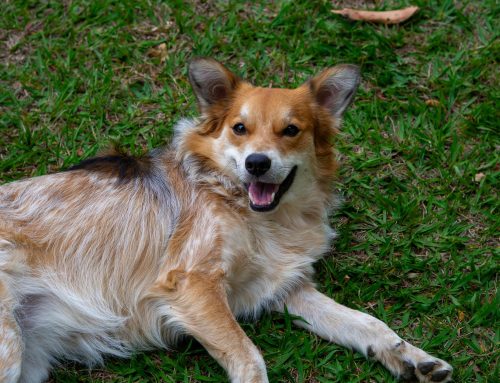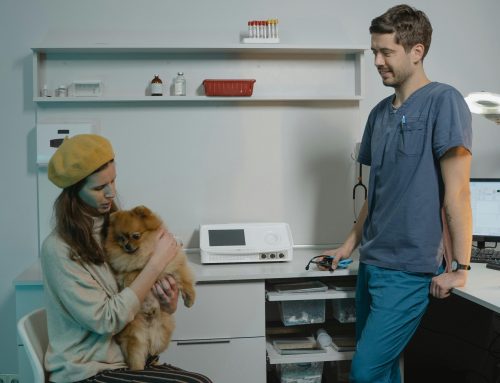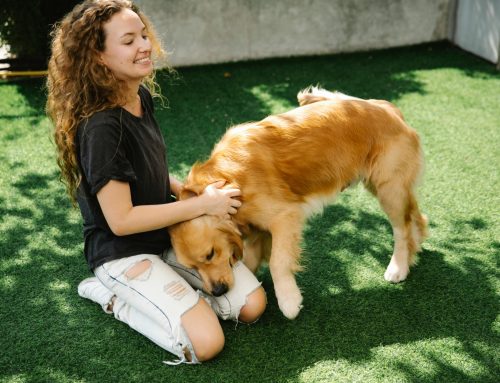
The Emotional Journey of Pet Surgery
There are few things more anxiety-inducing than knowing your beloved companion needs surgery. Whether it’s a routine spay/neuter procedure or something more complex, the worry is real and completely understandable. After all, our pets are family members who can’t tell us how they’re feeling or understand why they’re experiencing discomfort.
We’ve been on both sides of the examination table—as a concerned pet parent and as a veterinary professional—and we can assure you that with proper preparation, you can significantly reduce stress for both you and your furry friend.
Before the Surgery: Knowledge is Comfort
Understanding Your Pet’s Procedure
The foundation of preparation begins with understanding exactly what will happen during your pet’s surgery. Don’t hesitate to have an in-depth conversation with your veterinarian when the procedure is first recommended. Some important questions to ask include:
- What exactly does the surgery entail?
- What are the potential side effects or complications?
- What is the expected recovery timeline?
- What are the drop-off and pick-up times?
By gathering this information well before surgery day, you’ll have time to process everything and prepare mentally, rather than feeling overwhelmed on the day of the procedure.
Planning for Post-Surgical Care
One of the most important aspects of preparation is understanding what your pet will need after surgery. Ask your veterinarian:
- Will my pet need restricted activity, and for how long?
- Are there special care requirements for the surgical site?
- When should my pet return for follow-up appointments?
- Will my pet need medications, and if so, what are they for?
- Should I prepare a special diet for my pet’s recovery?
These questions will help you adjust your schedule and home environment to best support your pet’s healing process. If medications are prescribed, consider having them filled ahead of time so they’re ready when your pet comes home.
The Day Before Surgery: Practical Preparations
Fasting Requirements
Most surgical procedures require your pet to fast (no food) for a certain period before anesthesia, typically 8-12 hours. Your veterinarian will provide specific instructions, but it’s important to follow these guidelines precisely—even if your pet gives you those pleading eyes! Water is usually allowed until a few hours before the procedure, but confirm this with your veterinary team.
Completing Paperwork
Ask if there are forms you can complete ahead of time to streamline the drop-off process. Having these ready will give you more time to comfort your pet before leaving them at the clinic and reduce your own stress on surgery day.
Emergency Contacts
Make sure you’ll be reachable by phone throughout the day of surgery. Occasionally, veterinarians discover unexpected issues during a procedure and will need your authorization to address them. If you can’t be available, designate a trusted person who can make decisions on your behalf and inform the clinic of this arrangement.
Creating a Recovery Haven at Home
Setting Up a Quiet Space
Before bringing your pet home from surgery, create a comfortable recovery area. This should be:
- Quiet and away from household traffic
- Free from stairs or furniture, your pet might try to jump on
- Equipped with soft, clean bedding
- Easily accessible for you to monitor your pet
- Separate from other pets who might play too roughly
For added comfort, place an item with your scent (like a worn t-shirt) in their recovery area—this familiar smell can be remarkably calming.
Safety-Proofing
If your pet is on pain medication or immediately after anesthesia, they might be a bit disoriented. Remove potential hazards and block access to areas where they could injure themselves, such as pools, stairs, or balconies.
Digestive Support
Anesthesia can sometimes cause digestive upset. Having gentle foods on hand can help ease your pet back into eating:
- Plain boiled chicken and white rice (no seasonings)
- Veterinary-prescribed recovery food
- Plenty of fresh water in an easily accessible bowl
If your pet has a sensitive stomach, ask your veterinarian about pre-emptive anti-nausea medications or probiotics to support digestive health during recovery.
Surgery Day: Staying Calm for Your Pet
Our pets are remarkably intuitive and can sense our anxiety. On the morning of surgery, try to maintain a calm, positive demeanor, even if you’re feeling nervous. Your reassurance will help your pet feel safe.
When dropping off your pet:
- Arrive with plenty of time to complete any remaining paperwork
- Consider bringing a familiar toy or blanket (check with the clinic first)
- Keep goodbyes brief and upbeat
Remember that veterinary staff understand exactly what you’re going through. Many of us have sat in the waiting room with our own pets, checking our phones every few minutes for updates. Don’t hesitate to call for status updates if it helps ease your mind.
The Homecoming: First 24 Hours Post-Surgery
The first day home is crucial for setting the tone of recovery. Your pet will likely be groggy, possibly confused, and may experience some discomfort despite pain medication.
Monitoring the Essentials
Keep a close eye on:
- The surgical site for signs of swelling, discharge, or excessive redness
- Your pet’s breathing pattern and energy level
- Water intake (some pets need encouragement to drink)
- Bathroom habits (first urination and bowel movement after surgery)
Medication Management
Create a schedule for administering any prescribed medications. Set alarms on your phone if needed, as consistent timing can make a significant difference in pain control and healing.
Preventing Self-Trauma
Many pets will instinctively lick or chew at their surgical site. Your veterinarian may provide a protective collar (the infamous “cone of shame”) or suggest alternatives like surgical recovery suits. While these might look uncomfortable, they’re essential for preventing complications.
Long-Term Recovery: Patience and Persistence
Every pet recovers at their own pace. Some bounce back quickly, while others need more time and patience. Throughout the recovery period:
- Follow activity restrictions precisely, even when your pet seems to feel better
- Maintain a consistent routine for medications and wound care
- Keep follow-up appointments, even if recovery seems to be going well
- Gradually reintroduce normal activities as directed by your veterinarian
Remember that what might seem like excessive caution is the fastest path to complete healing. Rushing the recovery process can lead to complications that ultimately extend the healing time.
When to Call Your Veterinarian
While some post-surgical changes are expected, certain signs warrant immediate veterinary attention:
- Excessive bleeding or discharge from the incision
- Incision that appears to be opening
- Severe swelling or bruising
- Persistent vomiting or diarrhea
- Refusal to eat for more than 24 hours
- Signs of severe pain despite medication
- Difficulty breathing
- Collapse or extreme lethargy
Most veterinary clinics provide emergency contact information for after-hours concerns. Keep this information readily accessible during your pet’s recovery period.
Conclusion: Partners in Healing
Surgery is undoubtedly a challenging time for pets and their people, but with thoughtful preparation and attentive care, you can make the experience much more manageable. Remember that you’re not alone in this journey—your veterinary team has chosen their profession because they care deeply about animals and the people who love them.
By understanding what to expect, preparing your home, and following post-surgical instructions diligently, you’re giving your pet the very best chance for a smooth recovery. Your loving attention during this vulnerable time strengthens the already powerful bond you share with your pet.
If your pet has an upcoming surgery and you live in the Keystone, Odessa, Westchase, or surrounding areas of Tampa, the compassionate team at West Park Animal Hospital is here to support both you and your pet through every step of the surgical process. Call us at (813) 749-6863 or request an appointment online to discuss your pet’s needs.
Frequently Asked Questions About Pet Surgery
Q: How long will my pet need to fast before surgery?
A: Most veterinarians recommend fasting your pet for 8-12 hours before surgery to prevent complications with anesthesia. Always follow your specific veterinarian’s instructions, as requirements may vary based on your pet’s age, health condition, and the type of procedure.
Q: Will my pet be in pain after surgery?
Some discomfort is normal after surgery, but your veterinarian will provide appropriate pain management medications. Modern veterinary medicine offers excellent pain control options, and many pets experience minimal discomfort when medication schedules are followed properly.
Q: How soon can my pet eat after surgery?
A: Most pets can have small amounts of food a few hours after returning home, but follow your veterinarian’s specific instructions. Start with small portions of easily digestible food, and gradually transition back to normal feeding over 24-48 hours.
Q: Do I need to restrict my pet’s activity after surgery?
A: Yes, most surgical procedures require some level of activity restriction during healing. The duration and extent of restriction depend on the specific procedure. Even if your pet seems energetic, following these restrictions is crucial for proper healing.
Q: How do I keep my pet from licking or chewing at the surgical site?
A: Protective collars (E-collars) are the most reliable method, though alternatives like surgical recovery suits may be options for some pets. Never leave your pet unattended without protection for the surgical site until healing is complete.
Q: When should I be concerned about my pet’s incision?
A: Contact your veterinarian if you notice excessive redness, swelling, discharge, bleeding, or if the incision appears to be opening. Also, call if the area feels unusually hot to the touch or has a strong odor.
Q: How will I know if my pet is in too much pain?
A: Signs of pain include reluctance to move, whimpering, unusual aggression, excessive panting, decreased appetite, and restlessness. If pain medication doesn’t seem to be helping, contact your veterinarian for guidance.
Q: Is it normal for my pet to be very sleepy after surgery?
A: Yes, lethargy is normal for 12-24 hours after anesthesia. However, your pet should be responsive and able to walk with assistance. Excessive grogginess beyond 24 hours warrants a call to your veterinarian.






Leave A Comment